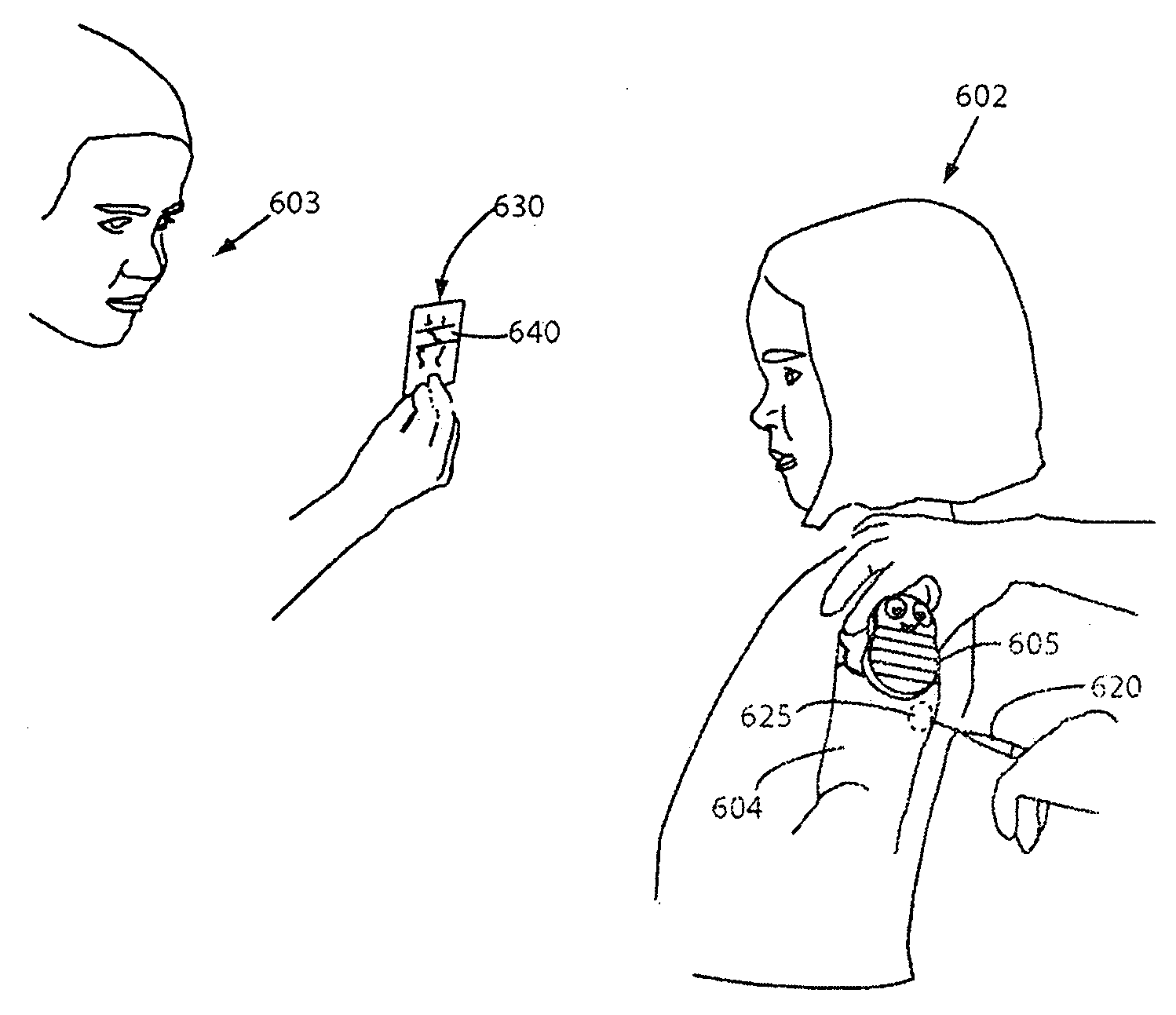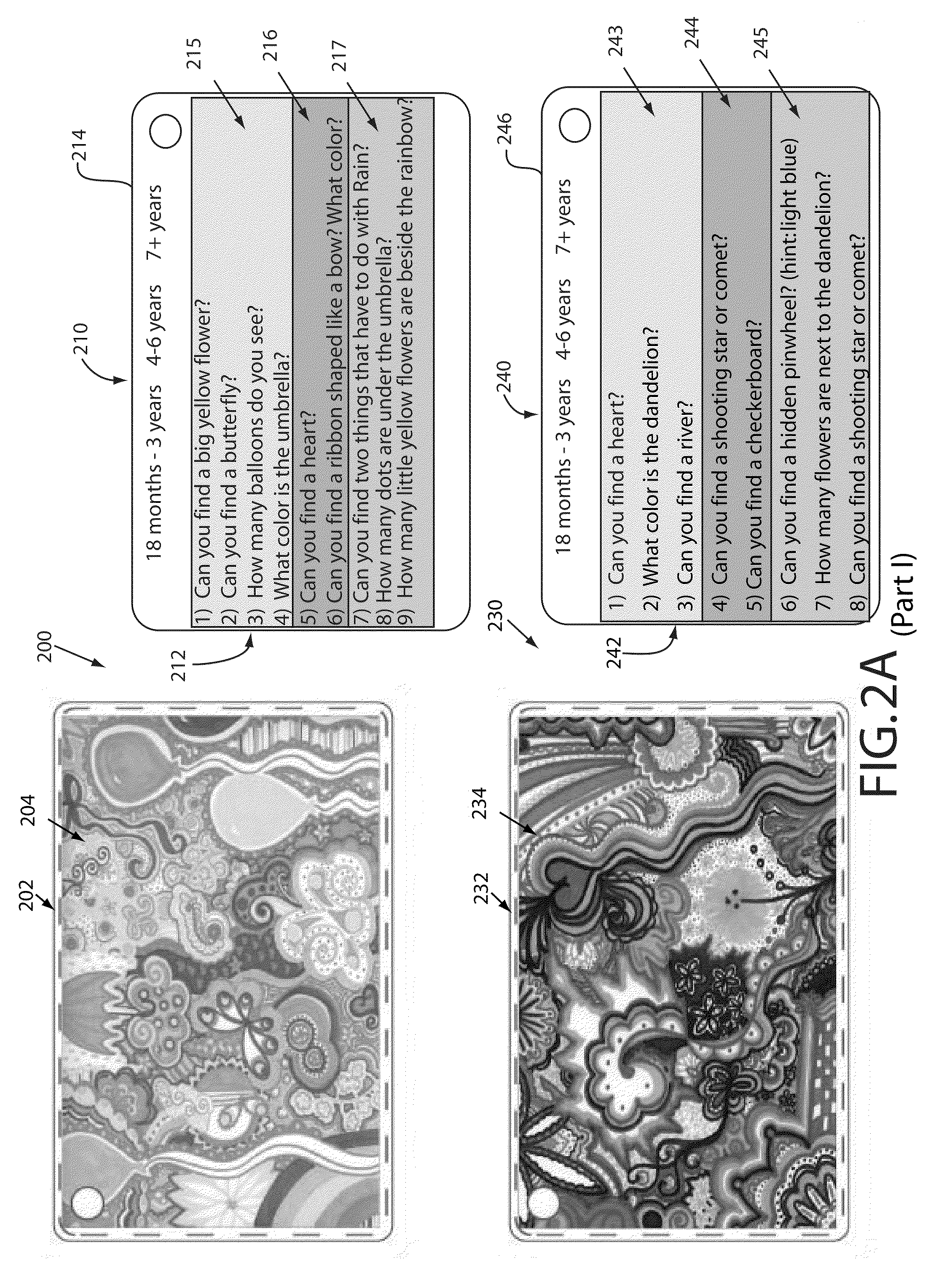Focused attention and pain reduction
a focused attention and pain reduction technology, applied in the field of pain reduction methods, can solve the problems of increasing the number and type of painful procedures that a patient must undergo, increasing the pain of unmanaged pain, and affecting the patient's pain, so as to minimize the pain of the patient, optimize the pain-reducing effect of thermal and/or vibratory analgesic means, and reduce the effect of anxiety
- Summary
- Abstract
- Description
- Claims
- Application Information
AI Technical Summary
Benefits of technology
Problems solved by technology
Method used
Image
Examples
embodiment 700
[0080]FIGS. 7A, 7B depict top and underside views respectively of an embodiment 700. The example device 700 has a housing 705 with an application area 720 adapted for applying one or more analgesic means. The application area 720 includes a thermal area 724, adapted for applying a thermal analgesia to a patient, and a vibratory area 726, adapted for applying a vibratory analgesia to a patient. Although depicted as discrete areas in FIG. 2, the thermal area 724 and the vibratory area 726 need not be physically distinct but instead can coextend and overlap. Although shown with both a thermal area 724 and vibratory area 726 for accommodating a thermal and a vibratory analgesia means, the invention can be practiced with only one or the other, with neither, or with an alternative analgesic means.
[0081]The housing 705 is a generally hollow structure sized to contain a thermal and / or vibratory analgesia means. Referring to FIG. 7B, the housing 705 includes a thermal source pocket 734 which...
first embodiment
[0096]One or more focus cards can be retained by a retaining means, such as a ring, held by a companion, and shown to the patient one at a time. Alternatively, a housing or other retention device positioned proximate to the user can receive and retain a focus card so that a patient can view the visual graphics of the focus card. A focus card can be configured for coupling to a housing. In a first embodiment, a housing has a receiving means, such as a slot, for receiving a focus card. The housing can be positioned on a patient and retain a focus card in an orientation that allows a patient to view the visual graphics on a first face of the card. In an example embodiment the retained focus card at least partially obstructs the user's view of a medical site on his body. The housing may include one or more analgesia means such as a thermal and / or vibratory analgesia means that can be applied to induce analgesic effects for the patient. In a further embodiment, a housing is positioned in...
PUM
 Login to View More
Login to View More Abstract
Description
Claims
Application Information
 Login to View More
Login to View More - R&D
- Intellectual Property
- Life Sciences
- Materials
- Tech Scout
- Unparalleled Data Quality
- Higher Quality Content
- 60% Fewer Hallucinations
Browse by: Latest US Patents, China's latest patents, Technical Efficacy Thesaurus, Application Domain, Technology Topic, Popular Technical Reports.
© 2025 PatSnap. All rights reserved.Legal|Privacy policy|Modern Slavery Act Transparency Statement|Sitemap|About US| Contact US: help@patsnap.com



